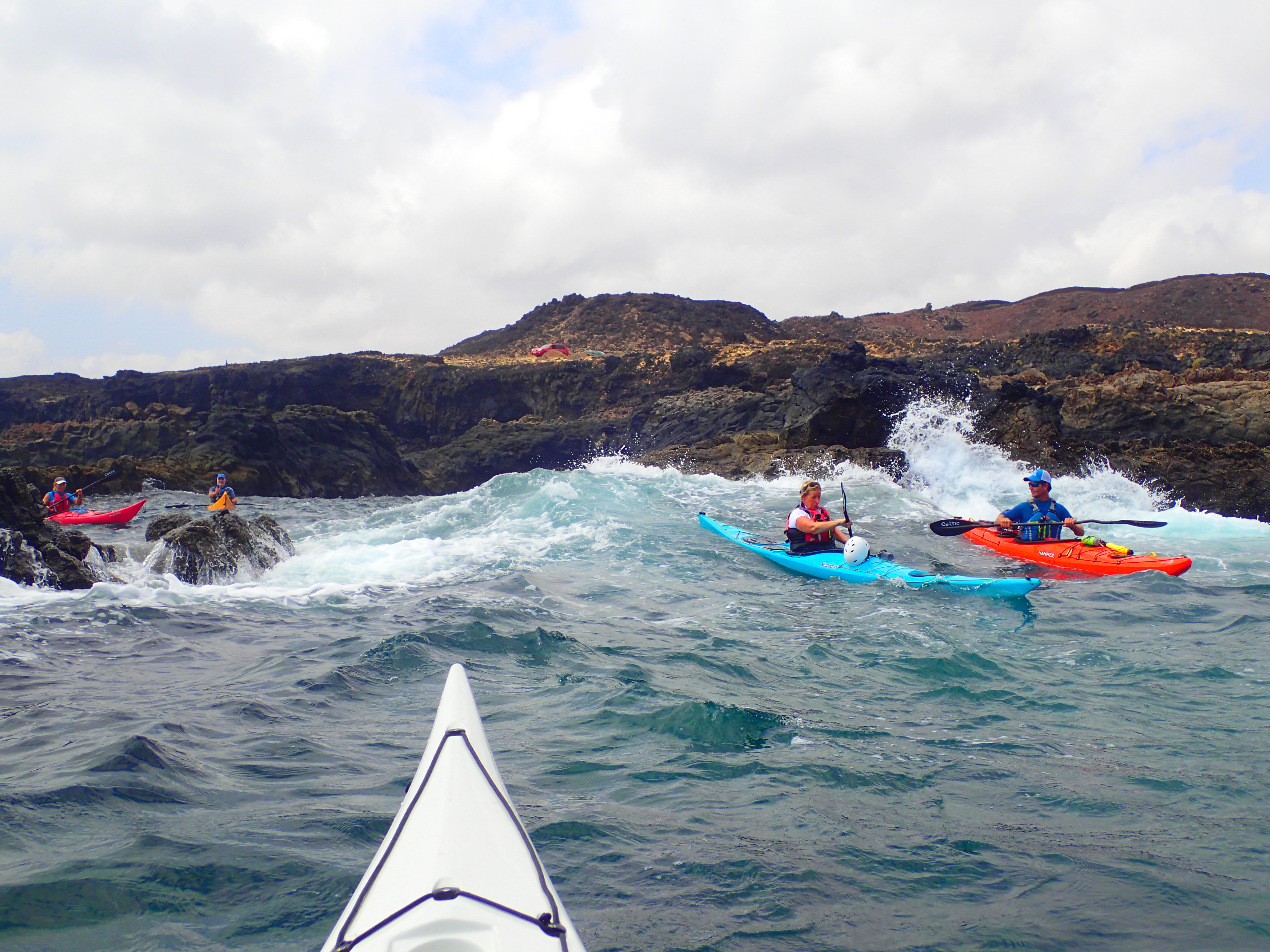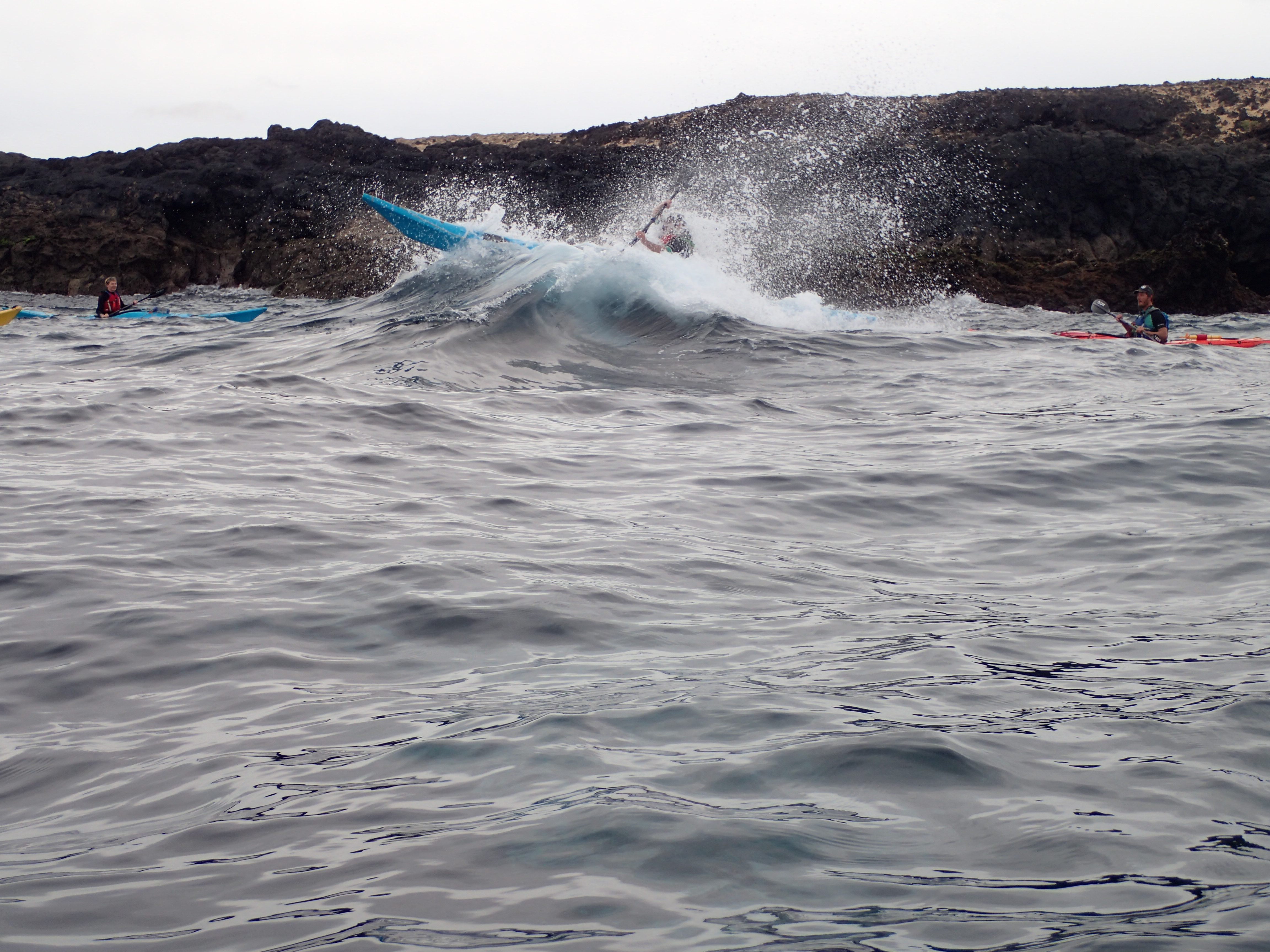The East Coast
 Rockhopping rules!
Rockhopping rules!
The east coast is a paddler's playground with plenty of exciting rocky areas and stunning lava formations to paddle through. We like people to enjoy the rockhopping as much as possible, so it's plastic boats only here! This is a great area for building confidence around rocks in rougher water and a fun place for more advanced paddlers to come and play around. There are so many nooks and crannies to explore, caves formed from lava tubes, passages into the cliffs, lava sea arches, whitewater passes between the rocks...these routes are relatively short at 8-10km but can take a long time to paddle because everyone's so busy enjoying the fun!
 The east coast is normally very exposed to the wind, and the swells from the west can also wrap around the island and hit this area, so rockhopping is reserved for days with light wind and no powerful swells coming round the island. The scenery here (apart from the volcanic rocks along the coastline) consists of low-lying desert scrubland, with the unmistakeable shape of Volcán de la Corona rising high in the background. This extinct volcano covered most of the northeast of the island in lava millenia ago and created our fantastic rockhopping playground, as well as a 6km lava tube that runs all the way from the volcano to the sea. This lava tube incorporates the Cueva de los Verdes and Jameos del Agua, well-known spots to visit on the island. The 1.5km portion of the lava tube that runs under the sea is known as the Tunnel of Atlantis.
The east coast is normally very exposed to the wind, and the swells from the west can also wrap around the island and hit this area, so rockhopping is reserved for days with light wind and no powerful swells coming round the island. The scenery here (apart from the volcanic rocks along the coastline) consists of low-lying desert scrubland, with the unmistakeable shape of Volcán de la Corona rising high in the background. This extinct volcano covered most of the northeast of the island in lava millenia ago and created our fantastic rockhopping playground, as well as a 6km lava tube that runs all the way from the volcano to the sea. This lava tube incorporates the Cueva de los Verdes and Jameos del Agua, well-known spots to visit on the island. The 1.5km portion of the lava tube that runs under the sea is known as the Tunnel of Atlantis.